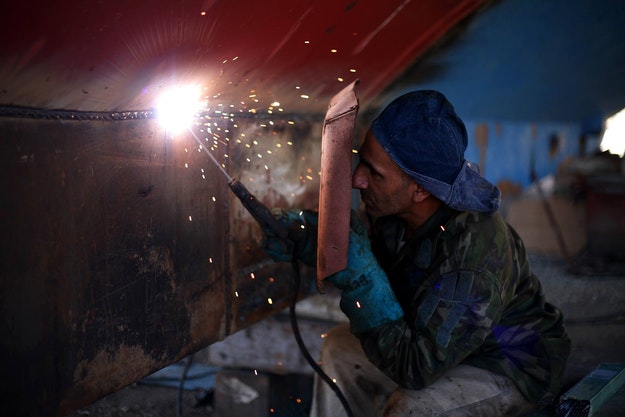Stick welding, also known as Shielded Metal Arch Welding (SMAW), a type of welding which uses an electrode or commonly known as welding stick. Stick welding is a widely-used welding process around the world.
When doing a stick welding, the welding rod or electrode, which has a core wire that is flux-coated, is used to bring the current and gives most of the metal weld. When the welding rod tip touches the metal layer, the high heat melts both the electrode and the metal base creating the weld.
It forms a surface of gas and dross that protects the weld from any stain. Its convenience was the reason why it is used in fields like construction, pipeline welding, heavy equipment repair, and other similar industries.
To learn more about stick welding, here are some of the necessary information about using this kind of welding method.
Affordable Equipment
Who wouldn’t want equipment that has a low cost? Stick welding requires necessary equipment that is relatively cheap compare to other welding methods. Stick welding requires only four basic materials; stick welder, rod holder, ground clamp, and stick welding electrodes.
Modern stick welding has moisture-resistant
Before one of the disadvantages of stick welding is hydrogen cracking, the previous electrodes released a high rate of hydrogen than those of today. This was the problem in the middle of the 20th century, where it cracks in ship hulls.
Later then, low-hydrogen welding sticks were produced and sold in the market, and the reviews were all positive as the cracking issues lessened. Modern electrodes should be used quickly and avoid exposure to general atmospheric conditions, so it won’t absorb moisture once seals are opened.
Shielding gas is not required
Another advantage of this method is that you don’t need to buy shielding gas, and for sure it will save a lot of your money. SMAW sticks produce its own shielding gas during the arc melts off the coating.
Can be used outdoor
Welding methods that require shielding gas is not applicable to be done outdoor. Even a small force of the wind could blow your shielding gas away and create porosity. While stick welding has a wind-resistant up to 58 kph and weld anywhere you want without having any issues.
Reach
One of the problems that welders are experiencing is the difficulty of reaching some hard to access joints. SMAW electrodes have an amazing length of 12-16 inches, which made it easier to reach all parts of the joints.
High Strenght Options
The flux coating of stick electrodes has arc properties that provide a robust alloy compared to other methods. It can deposit strength of 120Ksi or higher and is relatively simple to add alloys to the flux.
Stick Welding is Flexible and Versatile
If you want to weld different materials, it wouldn’t be difficult as you are thinking. Luckily, stick welding was made to make your work more comfortable with convenience. By just changing the type of electrode you are using (depends on what kind of material you will weld), everything else remains as it is. Unlike MIG welding, where you are required to make many adjustments, SMAW involves nothing more than picking the right electrode; then, you can continue to weld again.
There are tons of options available; you need to open yourself discovering and learning new methods, and don’t hesitate to try other things as this might give you more things to finish than your usual output. Just make sure to have the necessary knowledge by asking the experts, so it would be easier for you to make adjustments.











